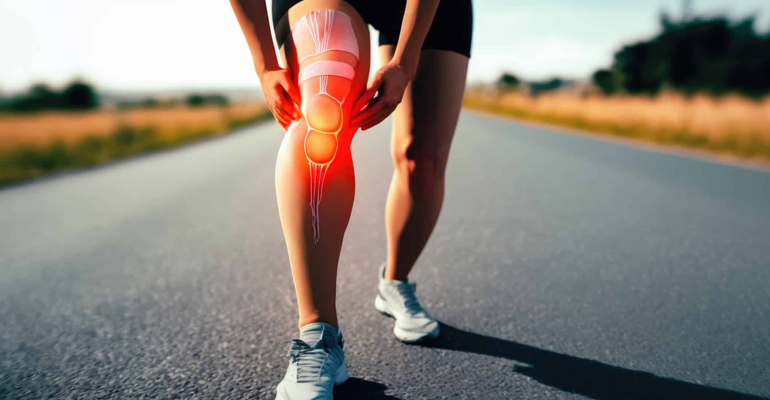-
-
+91-8591556577
-
Knee Pain

Knee Pain
Knee pain is a prevalent issue affecting people of all ages, from athletes to older adults. The knee joint bears much of the body’s weight, making it prone to injuries and degenerative conditions. Whether it’s a sudden injury or a chronic condition, knee pain can limit mobility and make everyday activities difficult.
Common Causes of Knee Pain
- Osteoarthritis: The most common cause of knee pain in older adults, osteoarthritis occurs when the protective cartilage that cushions the knee wears down over time.
- Tendonitis: Inflammation of the tendons, particularly the patellar tendon (jumper’s knee), can result from overuse or repetitive movements.
- Meniscus Tear: The meniscus is a rubbery cartilage that acts as a shock absorber in the knee. A tear in this structure, often from twisting movements, can cause pain, swelling, and limited range of motion.
- Ligament Injuries: Damage to the knee’s ligaments, such as the ACL (anterior cruciate ligament), can occur during sports or accidents, leading to instability and pain.
- Bursitis: Inflammation of the bursae, small fluid-filled sacs that cushion the knee joint, can cause pain and swelling, especially after repetitive kneeling or overuse.
Symptoms of Knee Pain
- Sharp or dull pain in the knee joint
- Swelling, stiffness, or reduced range of motion
- Difficulty walking, climbing stairs, or bending the knee
- A popping or crunching sensation
- Knee instability or weakness
Prevention and Management
- Maintain a Healthy Weight: Excess weight places additional stress on the knees, accelerating wear and tear.
- Strengthen Muscles: Exercises to build strong leg muscles, particularly the quadriceps and hamstrings, can help support and stabilize the knee.
- Wear Proper Footwear: Supportive shoes with good cushioning can reduce the impact on the knees.
- Warm Up and Stretch: Before physical activity, make sure to warm up and stretch the muscles around the knee to prevent injury.
Treatment Options
At our clinic, we provide a range of treatments to address knee pain, depending on its cause and severity:
- Physical Therapy: Customized exercises to strengthen the knee, improve flexibility, and restore function.
- Medications: Over-the-counter pain relievers and anti-inflammatory drugs can help manage pain and reduce swelling.
- Knee Injections: Corticosteroid injections may be used to relieve pain and inflammation in the joint.
- Minimally Invasive Surgery: In cases of severe injury or chronic conditions, arthroscopic surgery or knee replacement may be considered to repair or replace the damaged structures.
